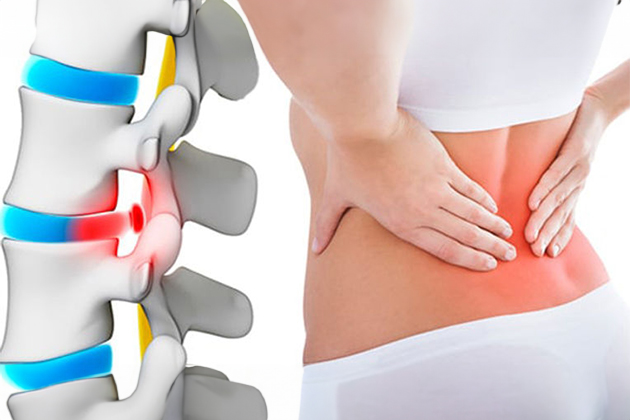
Which conditions are the most common causes?
In our daily life, a significant portion of spinal traumas are caused by injuries after traffic accidents and falls from heights. Spinal fractures and injuries can occur in any part of the spine from the neck to the coccyx. Spinal injury is seen at the junction of the back and lumbar vertebrae (between the 12th back vertebra and the 1st lumbar vertebra, T12 – L1), which is the most mobile part of the spine. Seventy per cent of fractures occur in the back and lumbar vertebrae, 5-10 per cent in the cervical vertebrae and the rest in the lower regions.
What are the Symptoms?
Patients may have neck, waist or back pain depending on the location of the lesion. After trauma, sudden onset of neck, back or lower back pain is typical. The pain worsens with standing up or walking. Spinal fractures due to osteoporosis may also develop without a history of trauma. Since the pain complaint is tolerable in fractures that occur after osteoporosis, the patient can continue his/her daily life without noticing this condition. A compression fracture of the spine can lead to a loss of height in the bone over time, which can cause the spine and thus the patient’s posture to deteriorate and lead to a hump called ‘kyphosis’.
can lead to paralysis.
If the spinal fracture has damaged the spinal cord or the nerves that exit from the spinal cord, patients may experience various forms of paralysis. The patient may not be able to move his/her arms or legs. Loss of sensation may be added to this weakness. Urination and defecation control may be impaired.
How is the diagnosis made?
The history of the disease, the patient’s complaints, and examination findings are very important for diagnosis. X-ray (direct radiography) is the first examination to be performed in patients with suspected injury. Most of the time
Computerised tomography (CT) provides detailed information about the structure of the spinal bones.
It clearly shows broken bone fragments that have entered the spinal canal. It provides information about the amount, shape and type of fracture. Magnetic resonance imaging (MRI) provides more information about the soft tissues in the spine. This provides detailed information about the spinal cord, nerve tissue, cartilage, ligaments and connective tissue. As a result, the patient may have spinal cord damage, traumatic hernias accompanying spinal fracture, haemorrhages in or around the spinal cord, ligament and connective tissue tears.
can be evaluated in detail.
How is the treatment performed?
Conservative (Protective) Treatment
Conservative preventive treatment is sufficient in most cases. The main aim here is to reduce the movement of the traumatised spine, to accelerate healing and to reduce pain. Bed rest may be applied for varying periods of time depending on the shape and location of the fracture.
Painkillers, restriction of movement, use of a corset and drugs that increase bone strength and density can help the bone to fuse on its own. In cases where medical treatment cannot be sufficient, surgical treatment is tried.
What is Surgical Treatment? When is it needed?
Surgery is required in patients where the pain cannot be controlled or the collapse of the spine is at critical levels. The primary goal is to relieve the compressed spinal cord and nerve roots.
Minimally invasive surgery:
In this method, under local anaesthesia and special imaging methods in the operating room conditions, thick needles are inserted into the fracture area and depending on the condition of the fracture, the collapsed part can be raised with cement (kyphoplasty) or filled directly into the fracture.
(vertebroplasty). This relieves the pain in the collapsed spine and strengthens the spine. Patients can be sent home the same day or the next day after these procedures.
Spinal fusion surgery:
In some cases, patients are not suitable for this treatment. In this case, open surgery is performed. With open surgery, bone fragments that press on the spinal cord are removed. The fragmented vertebral bodies are replaced with metal cages or supportive bone structures. In addition, the vertebrae may need to be stabilised with titanium screws and rods to restore the alignment and load-bearing properties of the spine. To increase bone support and fusion, grafts from the body or externally prepared grafts can be used.
Frequently Asked Questions
Symptoms of a vertebral compression fracture include sudden onset or worsening back or lower back pain, short stature, hunchback (kyphosis), restricted mobility and numbness, tingling or weakness in the legs due to pressure on the nerve roots.
A collapse fracture of the spine is diagnosed by physical examination and imaging tests. X-rays show the height of the vertebrae and the location of the fracture. An MRI provides more detailed information about the nerve roots and soft tissues. CT scans also allow a detailed examination of the fracture. In addition, a bone density test (DEXA) is used to assess the presence of osteoporosis.
It is important to maintain and strengthen bone health to prevent vertebral compression fracture. Adequate calcium and vitamin D intake, regular exercise, avoidance of smoking and excessive alcohol consumption, a healthy diet and taking measures to reduce osteoporosis risk factors are important. In addition, early diagnosis and treatment of osteoporosis can be provided by having regular bone density checks.
Treatment options include non-surgical methods and surgical interventions. Non-surgical treatments include rest, painkillers, physiotherapy, bracing and osteoporosis treatment. Surgical treatments include vertebroplasty, kyphoplasty and spinal fusion. Which treatment method is used depends on the severity of the fracture and the general health of the patient.

